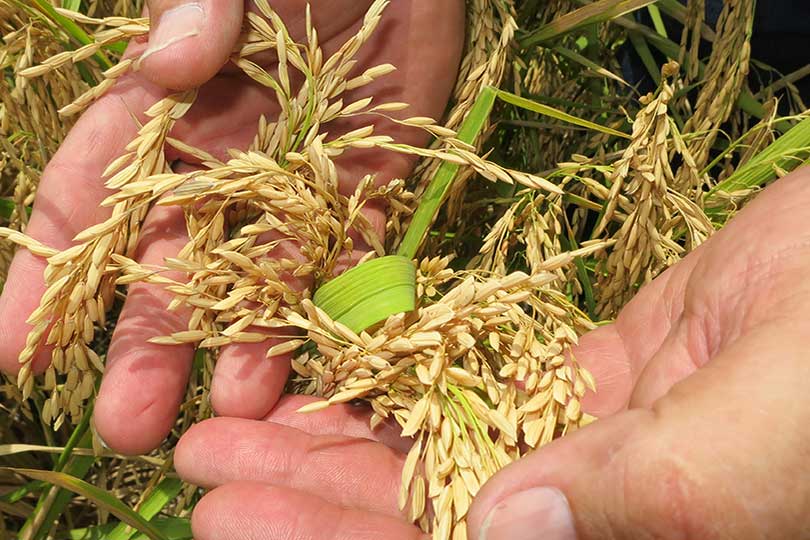U.S. growers produced the second largest rice crop on record in 2016 after a 22 percent increase in planted acreage last spring and sharply higher yields in Texas and California.
“Both U.S. exports and domestic use of rice are projected higher,” Nathan Childs, senior economist with the U.S. Department of Agriculture’s Economic Research Service said at the USA Rice Federation’s annual Rice Outlook Conference in Memphis, Tenn. The conference gives the rice industry an opportunity to take stock of where it’s been and where it’s headed in the coming year.
The U.S. rice industry is expected to have more rice on hand at the end of the 2016-2017 marketing year than in three decades, according to Southwest Farm Press.
“Despite that stronger total use, total U.S. rice ending stocks are projected to be the highest in three decades,” Childs said. “We’re looking at just shy of 60 million hundredweight, and we haven’t had that much rice since the 1980s.”
Childs said the larger supplies are expected to result in lower season average prices for both long-grain and medium-grain rice in the 2016-2017 marketing year compared to the previous year.
Texas planted about 190,000 acres, helping give U.S. rice plantings a boost, Childs noted. The end of water restrictions in the rice area which held Texas back for years helped increase acreage.
Rice acreage in California bounced back to normal to 550,000 acres after a more favorable water situation.
“There are still areas of drought in southern California, but in northern California there is more water for rice,” Childs noted.
Texas rice growers produced a record yield of 8,800 pounds per acre, according to the November National Agricultural Statistics Service.
“Texas is reporting an extremely high yield for a southern state, up 27.5 percent,” Childs said. “California’s yield is up only slightly from a year ago.”
Adverse weather conditions such as high nighttime temperatures and heavy rains that occurred mainly on the west side of the Mississippi River caused yields to go down in Arkansas, Missouri and Louisiana.
Mississippi’s average of 7,100 pounds was unchanged from 2015 primarily because the August rains stayed on the other side of the river.
U.S. domestic consumption and residual use and exports of U.S. rice are both expected to be up in 2016-2017, but won’t reach records. Increased residual or harvest losses or quality losses could be factors driving the increase in domestic use, according to Childs.
More rice to export and the fact that U.S. prices have become more competitive in the world markets will give exports a four percent boost.
U.S. long-grain and medium- and short-grain prices have been falling in recent months with the average for long-grain dropping from $11.10 to $9.70 per hundredweight, according to Southwest Farm Press.
“Global import demand is also projected to decline in 2016 and remain below record in 2017,” Childs said.

